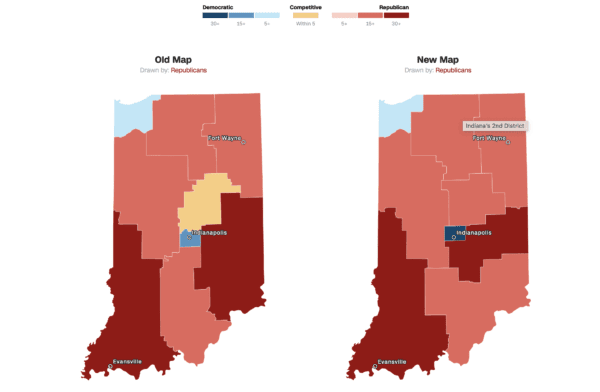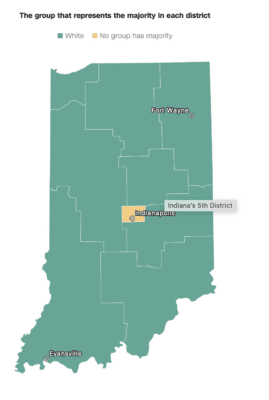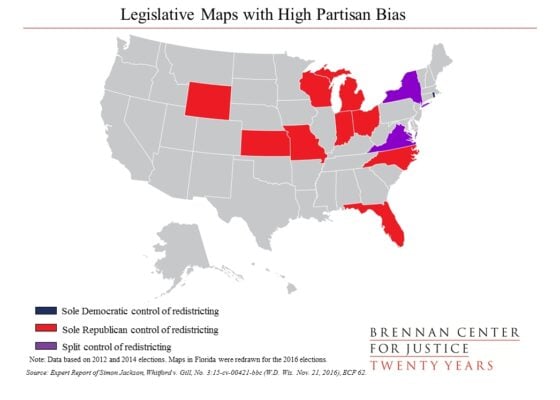Gerrymandering, manipulating electoral district boundaries to favor a political party, has a long and complex history in Indianapolis politics.
As the city evolved and grew, mapmaking became a strategic tool to influence elections, sometimes at the expense of fair representation.
A history shaped by politics and demographics
Since the consolidation of Indianapolis and Marion County into Unigov in 1970, redistricting has played a crucial role in shaping the city’s political landscape. Unigov expanded the city’s boundaries, incorporating many suburban areas that tended to vote more conservatively, which shifted the balance of power in local elections.

One notable example occurred during the 1980s and 1990s when district lines were drawn to dilute the voting strength of Black communities concentrated on the near east and northwest sides of Indianapolis. Political analysts and civil rights advocates argued that these “cracking” tactics fractured cohesive minority neighborhoods across multiple districts, limiting their ability to elect candidates of choice.
In 2011, redistricting after the 2010 census sparked controversy when critics said the maps split predominantly Black neighborhoods in Indianapolis’s east and northwest sides between several districts.

Some saw this division as an effort to reduce the political influence of minority voters, who tend to vote Democratic, and protect Republican incumbents in surrounding districts. The National Democratic Redistricting Committee filed legal challenges, alleging that the maps diluted minority voting power in violation of the Voting Rights Act.
Further examples include congressional district maps that have been accused of “packing” Black voters into one or two districts while surrounding districts are drawn to favor Republican candidates. This method concentrates opposition voters into a small number of districts, reducing their influence elsewhere.
Why gerrymandering matters in Indianapolis
Indianapolis is a diverse city with neighborhoods that differ greatly in race, income, and political views. When district lines split or concentrate communities strategically, it can silence voices and distort election outcomes.
For instance, splitting a cohesive neighborhood with common interests into multiple districts, known as “cracking,” can prevent voters from electing representatives who truly reflect their concerns. Conversely, “packing” concentrates voters into a few districts, limiting their ability to impact elections citywide.
Such tactics have led to “safe seats” with little competition, reducing accountability. For marginalized communities, gerrymandering can mean fewer opportunities to elect leaders who represent their interests.

Ongoing debates and calls for change
As Indiana prepares for new maps following the 2020 Census, concerns persist that Republican leaders, including Gov. Mike Braun and Vice President JD Vance, may push partisan redistricting to weaken Democratic districts in Indianapolis.
Democratic leaders, including State Rep. Cherrish Pryor, warn that targeting Indianapolis’s most diverse districts threatens to silence marginalized voters. They call for independent commissions, transparent processes and meaningful public input to protect fair representation.
With gerrymandering continuing to shape Indianapolis’s political future, the fight over district lines remains a critical issue for voters and officials alike.
Contact Health & Environmental Reporter Hanna Rauworth at 317-762-7854 or follow her on Instagram at @hanna.rauworth.
Hanna Rauworth is the Health & Environmental Reporter for the Indianapolis Recorder Newspaper, where she covers topics at the intersection of public health, environmental issues, and community impact. With a commitment to storytelling that informs and empowers, she strives to highlight the challenges and solutions shaping the well-being of Indianapolis residents.





